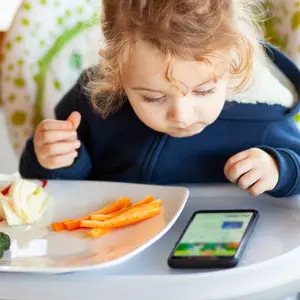

Relationships and Connections

Relationships and Connections
Aphrodisiacs: Myth or Reality?
The search for aphrodisiacs—substances of animal, plant, and insect origin thought to have an impact on sex drive—date back millennia. They can be classified into three types: those that increase libido, potency, or sexual pleasure. Various substances and food have been used as aphrodisiacs. But do they work?
Aphrodisiacs from traditional cultures run the gamut and include:
- Ambrein, a secretion from the digestive system of the sperm whale, has been shown to increase sexual behavior in rats.
- Panax ginseng, a traditional Chinese medicine, works as an antioxidant by enhancing nitric oxide synthesis, a process required to achieve erection.
- Spanish fly (cantharidin), a chemical derived from blister beetles, has been used as a sexual stimulant for millennia; however, abuse of Spanish fly can result in death.
Foods have also been identified as aphrodisiacs based on their:
- Shape (aphrodisiacal qualities are related to genitalia-shaped foods like oysters, asparagus, and root vegetables);
- Relationship to reproduction (caviar, quail eggs, and reproductive-organ meats are said to boost sexual energy); and
- Spiciness (hot and spicy foods are thought to make you hot and bothered, too).
It has been suggested that many foods have aphrodisiacal properties. While most of them lack any proven sexual benefits, a few have been clinically shown to have some impact on sexual dysfunction, but more research is needed.
There are a few foods that have been studied for their impact on sexual performance, including:
- Maca (an early study of this South American root vegetable shows it may boost erectile function and sexual desire, but more research is needed);
- Pistachios (one study showed men who ate 100 grams of pistachios for three weeks had an increase in erectile function);
- Saffron (two studies have been made of people with sexual dysfunction and depression with one showing saffron helped with erectile dysfunction and the other improving arousal, lubrication, and pain in women).
Foods without any proven aphrodisiacal properties include: chili peppers, dark chocolate (a study of 720 men and women over age 20 found that women who consumed more chocolate actually had less interest in sex), figs, honey, strawberries, and oysters. Nevertheless, the power of aphrodisiacs is mostly in our head. So, if you or your partner find a food to be sexy, go for it to boost your libido and enhance your experience.
Sexual dysfunction can be related to serious physical and mental conditions and should be discussed with your partner and your practitioner to identify the underlying cause(s) rather than looking to aphrodisiacs to find a quick fix. Cleveland Clinic registered dietitian Julia Zumpano, RD, warns, “Stay away from supplements claiming to serve as aphrodisiacs, which aren’t approved by the FDA and may negatively interact with other medications.”
REFERENCES
Cleveland Clinic (2022, January 7). Do aphrodisiacs really work? Here’s whether natural foods can serve as a boost in the bedroom. https://health.clevelandclinic.org/what-are-aphrodisiacs/?
Golomb, B. A. and Berg, B. K. (2021, February 12). Chocolate consumption and sex-interest. National Center for Biotechnology Information, National Institutes of Health. https://www.ncbi.nlm.nih.gov/pmc/articles/PMC7885734/
Sandroni, P. (2001, October). Aphrodisiacs past and present: A historical review. Clinical Autonomic Research. National Center for Biotechnology Information, National Institutes of Health. https://pubmed.ncbi.nlm.nih.gov/11758796/


 By
By







